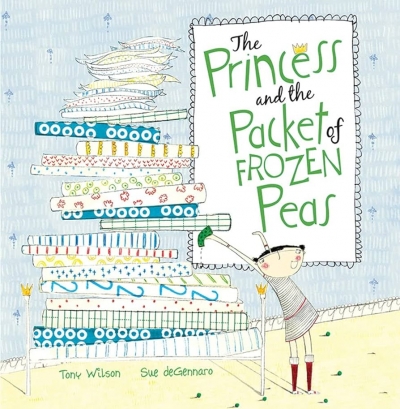CYA
Learning about the world is one of the great fruits of reading. It can be as much fun as solving a puzzle, provided the information is presented to invite questioning and interpretation. These five attractively produced, accessible books are designed to appeal to their intended audiences, but how well do they avoid the over-simplification that is an inherent danger in tailoring ‘facts’ to the needs and interests of inexperienced readers?
... (read more)The Princess and the Packet of Frozen Peas by Tony Wilson and Sue deGennaro
Goodbye Jamie Boyd by Elizabeth Fensham & Saltwater Moons by Julie Gittus
Miss McAllister’s Ghost by Elizabeth Fensham & Take it Easy, Danny Allen by Phil Cummings
Pam Macintyre
Top of my list is Sonya Hartnett’s bitter-sweet story of love and loss, The Ghost’s Child (Viking), for its emotional punch, mixture of realism, fairytale and magic realism, and exquisite prose. Also written with emotional clout is Bill Condon’s witty and frank Daredevils (UQP). Joel and Cat Set the Story Straight (Penguin), by Nick Earls and Rebecca Sparrow, gives sheer pleasure in a double-double writing act: Earls writes the wannabe Matthew Reilly contributions to a joint school writing task, while Sparrow has Cat channelling Jane Austen. The consequences of the uneasy school and personal relationships between the two, their increasingly intertwined lives, and the story they create are hilarious.
... (read more)Joel and Cat Set the Story Straight by Nick Earls and Rebecca Sparrow
Life’s not easy when … (fill in the blank according to your main story issue). It is a line that appears frequently on back covers and in press releases for junior fiction. But life is getting a lot easier for parents and teachers of reluctant readers who would far rather race around with a ball than curl up with a book. With the arrival of the sports novel, they can now read about somebody else racing around with a ball – or surfing, swimming, pounding the running track, wrestling, or cycling (the genre covers a wide field). Balls, however, seem to predominate. And problems. Life isn’t easy for publishers without a sports series. Hoping to emulate the success of the ‘Specky Magee’ books written by Felice Arena and Garry Lyon, publishers have been busy throwing authors and sport stars together, one to do the creative business, and the other to add verisimilitude and sporting cred.
... (read more)






